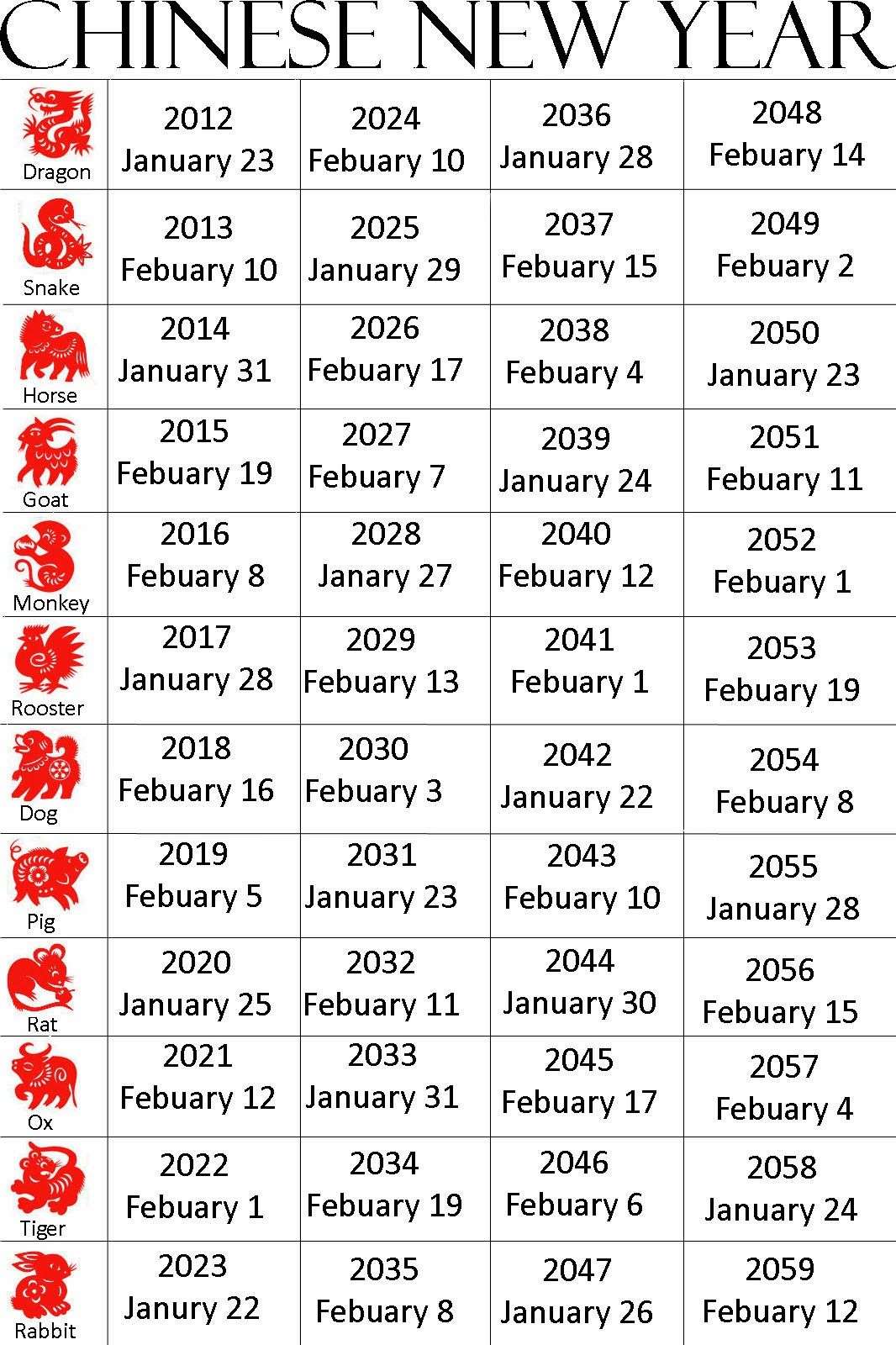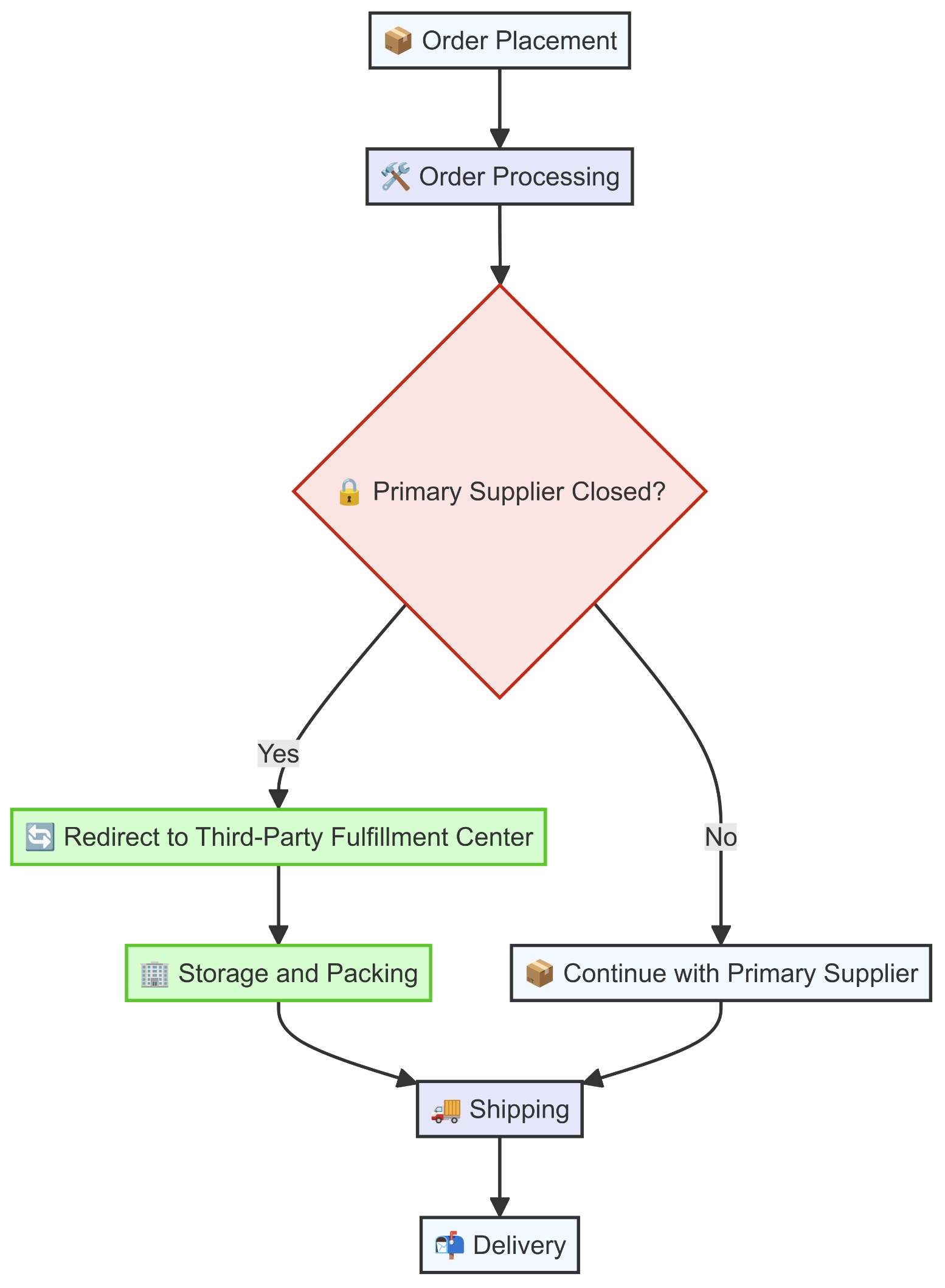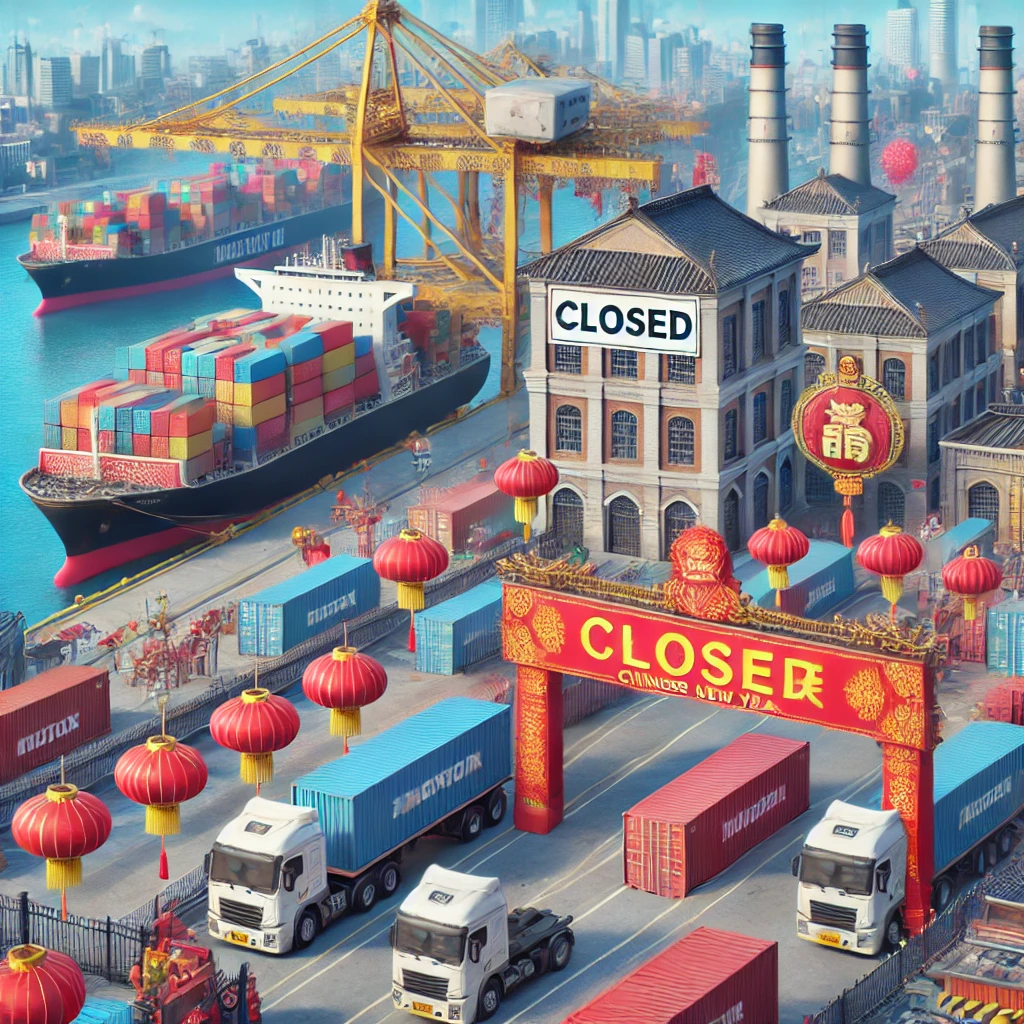Chinese New Year (CNY), also known as the Spring Festival, is the most significant traditional holiday in China, typically lasting 15 days from late January to mid-February. For dropshipping businesses, understanding the impact of CNY is crucial, as many manufacturers and suppliers halt operations, leading to shipping delays, inventory shortages, and communication challenges. By preparing for these potential disruptions, dropshipping businesses can minimize the impact on order fulfillment and maintain customer satisfaction during this period.
1. Chinese New Year Overview
Explanation of Chinese New Year and Its Cultural Significance
Chinese New Year (CNY), also known as the Spring Festival, is China’s most important traditional holiday. Celebrated by millions of people not only in China but around the world, it marks the beginning of the lunar new year. The festival is rooted in ancient Chinese culture, with origins dating back over 3,000 years. Traditionally, CNY is a time to honor deities and ancestors, and to bring families together. It is believed to be a period that sets the tone for the rest of the year, making it crucial to start with positivity and good fortune.
Duration and Dates of the Holiday
 Chinese New Year typically lasts 15 days, starting from the new moon that appears between January 21 and February 20. The holiday kicks off with New Year’s Eve, often marked by a large family feast, and concludes with the Lantern Festival. The dates for CNY vary each year based on the lunar calendar. For instance, in 2024, Chinese New Year begins on February 10 and ends on February 24. During this time, almost all businesses and schools close, and millions of people travel home, leading to the world’s largest human migration.
Chinese New Year typically lasts 15 days, starting from the new moon that appears between January 21 and February 20. The holiday kicks off with New Year’s Eve, often marked by a large family feast, and concludes with the Lantern Festival. The dates for CNY vary each year based on the lunar calendar. For instance, in 2024, Chinese New Year begins on February 10 and ends on February 24. During this time, almost all businesses and schools close, and millions of people travel home, leading to the world’s largest human migration.
Nationwide Business Shutdowns and Festivities
During CNY, most businesses in China, including factories and suppliers, shut down for at least one week, but many close for the entire 15-day period. This extended shutdown has a significant impact on supply chains and international trade. Dropshipping businesses, which often rely on Chinese suppliers, need to plan ahead to manage potential inventory shortages and shipping delays.
Key Traditions and Activities During Chinese New Year
- Family Reunions: Family is central to CNY celebrations. The New Year’s Eve dinner is the most important meal of the year, symbolizing unity and prosperity. Dishes like fish (symbolizing abundance) and dumplings (symbolizing wealth) are staples.
- Red Envelopes: Known as hongbao, these red envelopes containing money are given by elders to children and unmarried adults. This tradition is meant to pass on good luck and ward off evil spirits.
- Fireworks and Lion Dances: Fireworks are set off at midnight to drive away evil spirits and usher in good fortune. Lion dances, performed by skilled dancers, are also believed to bring luck and prosperity.
- Cleaning and Decorating: Homes are thoroughly cleaned before the New Year to sweep away bad luck and make way for incoming good fortune. Decorations include red lanterns, couplets, and paper cuttings depicting auspicious symbols.
- Lantern Festival: The final day of the New Year celebrations is marked by the Lantern Festival. People light and release lanterns into the sky, symbolizing the letting go of the past and welcoming a bright future.
By understanding these cultural practices and the timing of the holiday, dropshipping businesses can better prepare for the annual disruptions caused by Chinese New Year, ensuring they can continue to meet customer demands even during this significant period.
Impact on Dropshipping
Supplier Shutdowns
Chinese New Year (CNY) leads to widespread factory shutdowns across China. Most factories close for at least one week, but many remain closed for up to 15 days. This extended closure disrupts production schedules and significantly impacts order fulfillment. For dropshipping businesses, this means potential delays in receiving goods and an increased risk of inventory shortages.
According to a report from the China Federation of Logistics & Purchasing, approximately 85% of factories close down during the CNY period. The timing and duration of these shutdowns vary each year, but the effect on production is consistent and substantial.
Typical Factory Shutdown Timeline and Expected Reopening Dates
| Year | Shutdown Start Date | Reopening Date |
|---|---|---|
| 2022 | January 31 | February 15 |
| 2023 | January 21 | February 5 |
| 2024 | February 10 | February 25 |
| 2025 | January 29 | February 13 |
| 2026 | February 17 | March 3 |
| 2027 | February 6 | February 21 |
| 2028 | January 26 | February 10 |
This table illustrates the typical duration of factory closures during CNY, showing how these shutdowns can affect supply chain timelines.
Shipping Delays
During CNY, port and shipping companies also experience closures. This leads to the accumulation of orders and a significant backlog once operations resume. The delays in the shipping process can extend well beyond the holiday period, affecting delivery times for several weeks. According to the Shanghai International Shipping Institute, the average delay in shipping during and after CNY can range from 2 to 4 weeks.
Flowchart of Shipping Process Delays During CNY

This diagram shows the typical shipping process and where delays are most likely to occur during CNY, highlighting key bottlenecks that can affect delivery times.
Supply Chain Disruptions
The temporary halt in production lines during CNY causes major supply chain disruptions. Essential materials may be delayed, leading to further production slowdowns. This impacts not just the immediate availability of products but can also cause a cascading effect on restocking efforts. A study by the Hong Kong Trade Development Council found that 70% of manufacturers experience a backlog in orders post-CNY, leading to longer lead times and increased pressure on logistics.
Main Components of the Supply Chain Affected by CNY
- Raw Material Supply: Delays in the delivery of raw materials to factories can halt production. For example, a factory producing electronics might face delays in receiving semiconductors, a critical component.
- Production Delays: With factory workers returning home for the holiday, production lines come to a standstill. This leads to a gap in the production schedule that can take weeks to recover.
- Shipping and Logistics: Ports and shipping companies operate with reduced staff, leading to bottlenecks in the transportation of goods. Even after CNY, the backlog of shipments can create extended delays.
- Inventory Management: Businesses may struggle to maintain stock levels, leading to stockouts and delayed order fulfillment. Dropshippers relying on just-in-time inventory systems are particularly vulnerable.
Understanding these impacts allows dropshipping businesses to strategize effectively and mitigate potential disruptions during the Chinese New Year period. By planning ahead, increasing stock before the holiday, and communicating clearly with customers about potential delays, businesses can maintain customer satisfaction and operational efficiency during this challenging time.
2. Managing Dropshipping During Chinese New Year
Pre-Holiday Preparation
Effective pre-holiday preparation is crucial for minimizing disruptions during Chinese New Year (CNY). One of the key strategies is placing larger orders in advance to build up stock. This ensures that you have enough inventory to meet customer demand during the holiday period. According to a survey by Alibaba, businesses that plan their orders at least three months in advance experience 30% fewer disruptions during CNY.
Identifying critical stock items is also essential. Focus on high-demand products and ensure you have sufficient inventory to avoid stockouts. By planning ahead, you can maintain smooth operations and keep your customers satisfied. For example, if you know certain items are popular during January and February, make sure these products are well-stocked.
Steps for Pre-Holiday Inventory Management
- Analyze Sales Data: Review historical sales data to identify top-selling products and forecast demand. Use tools like Google Analytics and Shopify reports to gather insights.
- Increase Stock Levels: Place larger orders for high-demand items. Consider doubling your usual order quantities to cover the CNY period.
- Communicate with Suppliers: Confirm their shutdown dates and plan accordingly. Establish a timeline for when you need to place your last orders.
- Diversify Suppliers: Consider sourcing from regions unaffected by CNY, such as Vietnam or India. This can help mitigate the risk of disruptions.
- Buffer Stock: Maintain a buffer stock of at least 20-30% above your normal inventory levels to account for unexpected demand spikes.
Communication with Suppliers
Clear and consistent communication with suppliers is vital. Establishing clear timelines and understanding holiday schedules can help you plan effectively. Confirm the last order dates and expected shipping dates to ensure timely delivery of goods. According to the International Trade Centre, proactive communication with suppliers can reduce supply chain delays by up to 25%.
Template for Communicating with Suppliers About CNY Schedules
| Supplier Name | Last Order Date | Shutdown Start Date | Reopening Date | Expected Shipping Date |
|---|---|---|---|---|
| Supplier A | January 10 | January 21 | February 5 | February 6 |
| Supplier B | January 15 | January 20 | February 10 | February 11 |
| Supplier C | January 12 | January 25 | February 15 | February 16 |
| Supplier D | January 8 | January 18 | February 1 | February 2 |
By using a template like this, you can keep track of each supplier’s schedule and ensure you place orders in a timely manner.
Customer Communication
Keeping customers informed about potential delays is crucial for maintaining trust and satisfaction. Use various channels, such as email, social media, and your website, to communicate realistic delivery expectations and update shipping policies. A study by the Baymard Institute found that 67% of customers are more likely to shop again with a retailer who provides transparent shipping information.
Best Practices for Customer Communication During CNY
- Update Shipping Policies: Clearly state potential delays on your website. Include a banner or pop-up notification that informs customers about the CNY impact on delivery times.
- Send Email Notifications: Inform customers about expected shipping times. Use email marketing tools like Mailchimp to send targeted notifications to your customer base.
- Utilize Social Media: Post updates about shipping delays and holiday impacts on platforms like Facebook, Instagram, and Twitter. Regular updates can keep your customers informed and manage their expectations.
- Provide Regular Updates: Keep customers informed throughout the holiday period. Send follow-up emails with tracking information and any changes to the expected delivery dates.
- Customer Support: Ensure your customer support team is prepared to handle inquiries about delays. Provide them with a script and FAQs to assist customers efficiently.
By proactively managing your inventory and communicating effectively with both suppliers and customers, you can minimize disruptions and maintain a positive customer experience during Chinese New Year. This approach not only helps in maintaining customer satisfaction but also ensures operational efficiency during this challenging time.
3. Strategies for Minimizing Disruptions
Diversifying Suppliers
Diversifying suppliers is a crucial strategy for minimizing disruptions during Chinese New Year (CNY). Having multiple suppliers, especially those located outside of China, can significantly reduce the risk of inventory shortages and shipping delays. By sourcing from different regions, you can ensure a more stable supply chain and maintain consistent operations.
Benefits of Having Multiple Suppliers
- Risk Mitigation: Relying on multiple suppliers reduces the impact if one supplier experiences delays. For instance, if a Chinese supplier is closed during CNY, you can still source products from another supplier in a different region.
- Flexibility: Having alternative sources allows you to quickly adjust to changes in supply and demand. For example, if demand spikes unexpectedly, you can reach out to multiple suppliers to fulfill orders.
- Cost Efficiency: Competitive pricing from different suppliers can lead to cost savings. By comparing prices and terms, you can negotiate better deals and reduce overall costs.
Identifying Alternative Suppliers in Regions Unaffected by CNY
 Consider sourcing from countries like Vietnam, India, or Malaysia, which do not celebrate Chinese New Year. These regions can provide reliable alternatives during the holiday period. For example, Vietnam’s manufacturing sector has been growing rapidly, offering a range of products similar to those produced in China.
Consider sourcing from countries like Vietnam, India, or Malaysia, which do not celebrate Chinese New Year. These regions can provide reliable alternatives during the holiday period. For example, Vietnam’s manufacturing sector has been growing rapidly, offering a range of products similar to those produced in China.
Adjusting Marketing and Sales Strategies
Properly adjusting your marketing and sales strategies can help manage customer expectations and maintain sales momentum during CNY. Timing promotions to avoid peak holiday disruptions and clearly communicating holiday impacts in your marketing materials are essential steps.
Timing Promotions to Avoid Peak Holiday Disruptions
Plan your major promotions either before or after CNY to avoid shipping delays. This ensures that your customers receive their orders on time and remain satisfied with your service. For instance, running a significant promotion in early January can help you capitalize on pre-CNY sales without risking delays.
Communicating Holiday Impacts in Marketing Materials
Be transparent with your customers about potential delays. Use your website, email newsletters, and social media to inform them about the CNY period and what to expect in terms of shipping times. Transparency builds trust and helps manage expectations.
Marketing Strategies to Manage CNY Disruptions
- Pre-Holiday Sales: Run promotions before CNY to boost sales and clear inventory. This can help you reduce the stock that needs to be shipped during the holiday period.
- Extended Delivery Notices: Clearly state longer delivery times on product pages. This helps customers understand potential delays before they make a purchase.
- Post-Holiday Promotions: Plan sales events after CNY to re-engage customers. Offering discounts or special deals can help you regain momentum after the holiday disruptions.
- Email Updates: Send regular updates to customers about their order status. Keeping customers informed about their shipment progress can reduce anxiety and improve satisfaction.
Using Warehouses and Fulfillment Centers
Utilizing local or regional warehouses for stockpiling can help ensure that you have enough inventory on hand to meet customer demands during CNY. Leveraging third-party fulfillment centers can also maintain smooth operations and reduce shipping delays.
Utilizing Local or Regional Warehouses for Stockpiling
By storing products in warehouses closer to your main customer base, you can reduce shipping times and avoid delays associated with international shipping. For example, Amazon’s FBA (Fulfillment by Amazon) service allows you to store products in their warehouses, ensuring quick delivery to customers even during peak periods.
Leveraging Third-Party Fulfillment Centers
Third-party fulfillment centers can handle storage, packing, and shipping, allowing you to maintain efficient operations even when your primary suppliers are closed. These centers often have sophisticated logistics networks that can mitigate delays and ensure timely deliveries.
Workflow of Utilizing Third-Party Fulfillment Centers

Example of Effective Diversification
A notable example of effective diversification is the apparel industry, which often relies on multiple sourcing regions. Brands like H&M and Zara source products from various countries, including Bangladesh, Vietnam, and Turkey, in addition to China. This strategy not only mitigates risks associated with CNY but also ensures a continuous supply chain throughout the year.
By implementing these strategies, dropshipping businesses can minimize disruptions during Chinese New Year, ensuring a smooth and efficient operation that keeps customers happy and satisfied. This approach not only helps in maintaining customer satisfaction but also ensures operational efficiency during this challenging time.
4. Post-Holiday Recovery
Restocking and Inventory Management
After Chinese New Year (CNY), effective restocking and inventory management is crucial for recovering from disruptions. According to a report by the China Federation of Logistics & Purchasing, businesses that plan their restocking strategies in advance can reduce post-holiday stockouts by 40%.
Strategies for Quick Restocking Post-Holiday
- Prioritize Key Products: Focus on restocking high-demand items first. For example, if you know electronics were in high demand, prioritize these items.
- Expedited Shipping: Use faster shipping methods to reduce lead times. DHL Express and FedEx offer expedited services that can cut delivery times by 50%.
- Supplier Communication: Maintain open lines of communication with suppliers to get accurate timelines for restocking. Suppliers can provide realistic estimates for when items will be back in stock.
Managing inventory levels to avoid future stockouts and planning for the next CNY is equally important. Implementing a robust inventory management system, like TradeGecko or Zoho Inventory, can help track stock levels, predict demand, and avoid overstocking or understocking.
Key Actions for Post-CNY Restocking
- Review Inventory Data: Analyze which items sold out during CNY and prioritize restocking them. Use historical sales data to guide decisions.
- Adjust Order Quantities: Based on sales data, adjust future order quantities to better meet demand. For example, if a product consistently sells out, increase the order quantity by 20-30%.
- Monitor Supply Chain: Keep a close watch on the supply chain to anticipate any delays and act accordingly. Use tools like Supply Chain Guru to model and optimize supply chain operations.
Analyzing Performance and Planning Ahead
Analyzing performance post-CNY is vital for identifying areas of improvement. Reviewing sales and operational data can provide insights into what worked well and what didn’t. According to McKinsey & Company, businesses that regularly review performance metrics can improve operational efficiency by 25%.
Reviewing Sales and Operational Data
Look at sales trends, customer feedback, and operational efficiency to identify strengths and weaknesses. Use analytics tools like Google Analytics and Shopify Analytics to gather detailed insights.
Planning Ahead for the Next CNY
Based on the analysis, start planning for the next CNY. This includes adjusting inventory levels, refining supplier communication strategies, and improving customer communication plans. Planning ahead can help you avoid the same issues and improve overall performance.
Metrics to Track for Post-CNY Performance Analysis
| Metric | Description | Importance |
|---|---|---|
| Sales Volume | Total sales during CNY | Identifies popular products and trends |
| Stockout Frequency | Number of times products were out of stock | Helps in planning better inventory levels |
| Customer Complaints | Number and type of complaints received | Indicates areas for service improvement |
| Order Fulfillment Time | Average time to fulfill orders | Measures efficiency in handling orders |
| Supplier Lead Time | Time taken by suppliers to deliver goods | Assesses reliability of suppliers |
| Return Rate | Percentage of returned products | Identifies quality or satisfaction issues |
By closely monitoring these metrics, you can make informed decisions to enhance operational efficiency and customer satisfaction. This proactive approach ensures that your business is better equipped to handle the challenges and opportunities of the next Chinese New Year.
5. Final Thoughts and Best Practices
Recap of Key Points on How CNY Affects Dropshipping
Chinese New Year (CNY) significantly impacts dropshipping businesses due to widespread factory shutdowns, shipping delays, and supply chain disruptions. Understanding these effects allows businesses to proactively manage and prepare for this period, ensuring minimal disruption to operations and maintaining customer satisfaction.
Emphasis on Proactive Management and Preparation
Effective pre-holiday preparation includes placing larger orders in advance, identifying critical stock items, and maintaining clear communication with suppliers and customers. By planning ahead, businesses can avoid inventory shortages and manage customer expectations, reducing the negative impact of CNY on their operations.
Encouragement to Implement Strategies for Minimizing Disruptions
Implementing strategies such as diversifying suppliers, adjusting marketing and sales strategies, and utilizing warehouses and fulfillment centers can help minimize disruptions. Proactive management and continuous communication with all stakeholders are crucial for maintaining smooth operations during CNY.
Additional Tips and Best Practices
Monitoring Supplier Schedules
Keeping track of supplier holidays and planning accordingly can prevent unexpected delays. Use tools and resources to monitor supplier schedules and ensure you are aware of any potential disruptions.
Tools and Resources for Tracking Supplier Schedules
- Google Calendar: Set reminders for supplier holiday schedules.
- Trello: Create boards to track and manage supplier timelines.
- Supply Chain Management Software: Use software like SAP or Oracle to monitor supplier activities.
Emergency Plans
Developing contingency plans for unexpected delays can help manage unforeseen disruptions. An effective emergency plan includes several key components to ensure you can quickly adapt to any situation.
Components of an Effective Emergency Plan
- Backup Suppliers: Identify and establish relationships with backup suppliers.
- Buffer Stock: Maintain additional inventory to cover potential delays.
- Crisis Management Team: Designate a team responsible for handling emergencies and making quick decisions.
Continuous Communication
Maintaining open lines of communication with suppliers, customers, and other stakeholders is essential for smooth operations. Effective communication strategies can help manage expectations and keep all parties informed.
Communication Strategies to Ensure Smooth Operations
- Regular Updates: Send regular updates to customers about order status and potential delays.
- Supplier Check-Ins: Schedule regular check-ins with suppliers to stay updated on their status.
- Customer Support: Ensure your customer support team is equipped to handle inquiries and provide accurate information.
By implementing these tips and best practices, dropshipping businesses can better navigate the challenges posed by Chinese New Year and maintain efficient operations throughout the holiday period.
FAQs
Navigating Chinese New Year (CNY) can be challenging for dropshipping businesses. Here are some common questions and their answers to help you prepare effectively.
How Long Does CNY Typically Last?
Chinese New Year typically lasts 15 days, starting from the new moon that appears between January 21 and February 20. The holiday begins with New Year's Eve and ends with the Lantern Festival. However, factory and business closures can extend beyond these dates, often lasting for 3 to 4 weeks in total.
What Are the Critical Dates to Be Aware of for Dropshipping Businesses?
Key dates to keep in mind for CNY 2024 are February 9 for New Year's Eve, February 10 for Chinese New Year Day, and February 24 for the Lantern Festival, which marks the end of the celebrations. Factory shutdowns typically start a week before New Year's Eve and can last up to two weeks after the Lantern Festival. Therefore, it's crucial to plan your orders and inventory well in advance.
How Can I Minimize the Impact of CNY on My Dropshipping Business?
To minimize the impact of CNY on your dropshipping business, place orders early to avoid disruptions, diversify suppliers by sourcing products from regions outside of China, and communicate effectively with customers about potential delays, setting realistic expectations. Additionally, using fulfillment centers can help maintain smooth operations during the holiday period.
References
For further reading and resources on dropshipping and Chinese New Year, consider the following links:
- Alibaba: Managing Your Business During Chinese New Year
- Shopify: Preparing for Chinese New Year
- Oberlo: The Ultimate Guide to Chinese New Year for Dropshipping
This revised outline integrates visual aids, tables, and bullet points to enhance readability and provide clear, actionable information for dropshipping business owners. By understanding the impact of Chinese New Year and implementing effective strategies, you can minimize disruptions and maintain a successful dropshipping operation.













